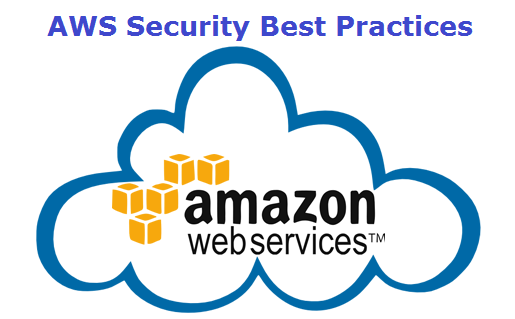AWS Security Best Practices: A Step Towards Amazon Cloud Data Protection


Nowadays cloud computing security is one of major concern for enterprises around the world. At the time of selecting a cloud service provider, an enterprise checks and analysis inbuilt security measures on cloud storage. One such cloud service provider is Amazon Web services, which is currently adopted by many business users. This blog will be rendering users with AWS security best practices helping in providing a bundle of security policies and procedures for the firm in cloud environment.
Points Describing AWS Security Best Practices Measures
The accurate preparation while working with AWS cloud will help in reducing or eliminating the large impact of Cyber attack. Following illustrated points are the practices that firms should take for AWS cloud data protection:
Learn About Shared Responsibility Security Model of AWS
The Amazon works under the concept of shared responsibility model. This takes the duty of information security stored under it. The information is the one in which critical details and applications of customers are saved. The cloud service provider is capable enough to detect the abuse and fraud, and immediately responding to wrong incidences by giving alert messages. The responsibility of security is not only in the hand of service providers but, it is also in hand of customers. A customer should ensure that AWS account is configured in a secure manner. The confidential documents should be shared with trusted authorities only and no other person should be having right even to view it.
- Amazon’s Responsibility: The cloud computing security team of Amazon focuses on the AWS security infrastructure. By default, it deals with the protection of cloud computing, database services and networking against intrusions. It also handles the security of hardware, software and all the physical hands that serves as a host. Apart from all this, Amazon is also taking responsibility for security for managed services like Redshift, WorkSpaces, Elastic MapReduce, DynamoDB, etc.
- Customer’s Responsibility: The responsibility of the consumers is to secure the utilization of AWS services, which are categorized under unmanaged services. You can understand this by an example – where on the one hand several layers are built by Amazon for security purpose, still, it should be the customer’s responsibility to ensure that multifactor authentication is active. This is particularly for those who are having extensive IAM permissions in Amazon web services.
Tighten Security Configurations of CloudTrail
CloudTrail is a service provided in AWS account. It creates log files of the API calls that are made within AWS, comprises of AWS management console, command line tools, SDKs, etc. This permits enterprises to constantly monitor the ongoing activities in AWS for the purpose of compliance auditing as well as forensic investigations. The log files generated in CloudTrail are saved in an S3 bucket. This means that if an attacker acquires access to the AWS account then, initially they will try to deactivate the feature of CloudTrail and erase all the log files. So, organizations need to tighten up the existing security of CloudTrail and learn its complete usage with help of following points:
- Prevent the gap of activity monitoring by activating CloudTrail over all the geographical regions and services.
- Activate the log file validation in CloudTrail to ensure the integrity of log file.
- Enable the access logging for the bucket of CloudTrail S3 to track the unauthorized account login attempts.
- Activate the MFA feature in the account to erase all the CloudTrail S3 buckets and then, encrypt all the log files at rest and flight mode.
AWS Security Best Practices by IAM Service
Identity and Access Management (IAM) is a service in AWS in which user provision and access control abilities are provided to the consumers. It can be utilized by an administrator to create and manage users as well as groups in AWS account. He/she can also apply the granular permissions rules for limiting down the access to APIs and resources of Amazon services. In order to make the best use of IAM feature, enterprises need to implement following AWS security practices:
- Ensure that IAM policies are attached to the groups or roles instead of an individual. This will minimize the risk of excessive data accessing from an individual.
- Try to assign minimum accessing privileges to the IAM users by fulfilling all their demanded needs.
Apply A Set of Data Loss Prevention Policies
Apply consistent policies over the custom programs and other AWS services. Through DLP policy engine, remediation workflow, and incident reporting, enterprises will be able to utilize services in the more efficient manner by preventing policy enforcement gaps in between the cloud services.
Categorize All Availed Custom Programs
Data visibility over the confidential items allow AWS security team to learn all regulations need to be applied to applications for data protection either in internal infrastructure or external.
Conclusion
The explained AWS security best practices are good to read but, they prove themselves more effective after their implementation. Enterprises should execute these measures for bringing a decent security level in their AWS infrastructure. Make sure that all possible cloud computing security points are implemented and enforced correctly in the Amazon cloud environment.